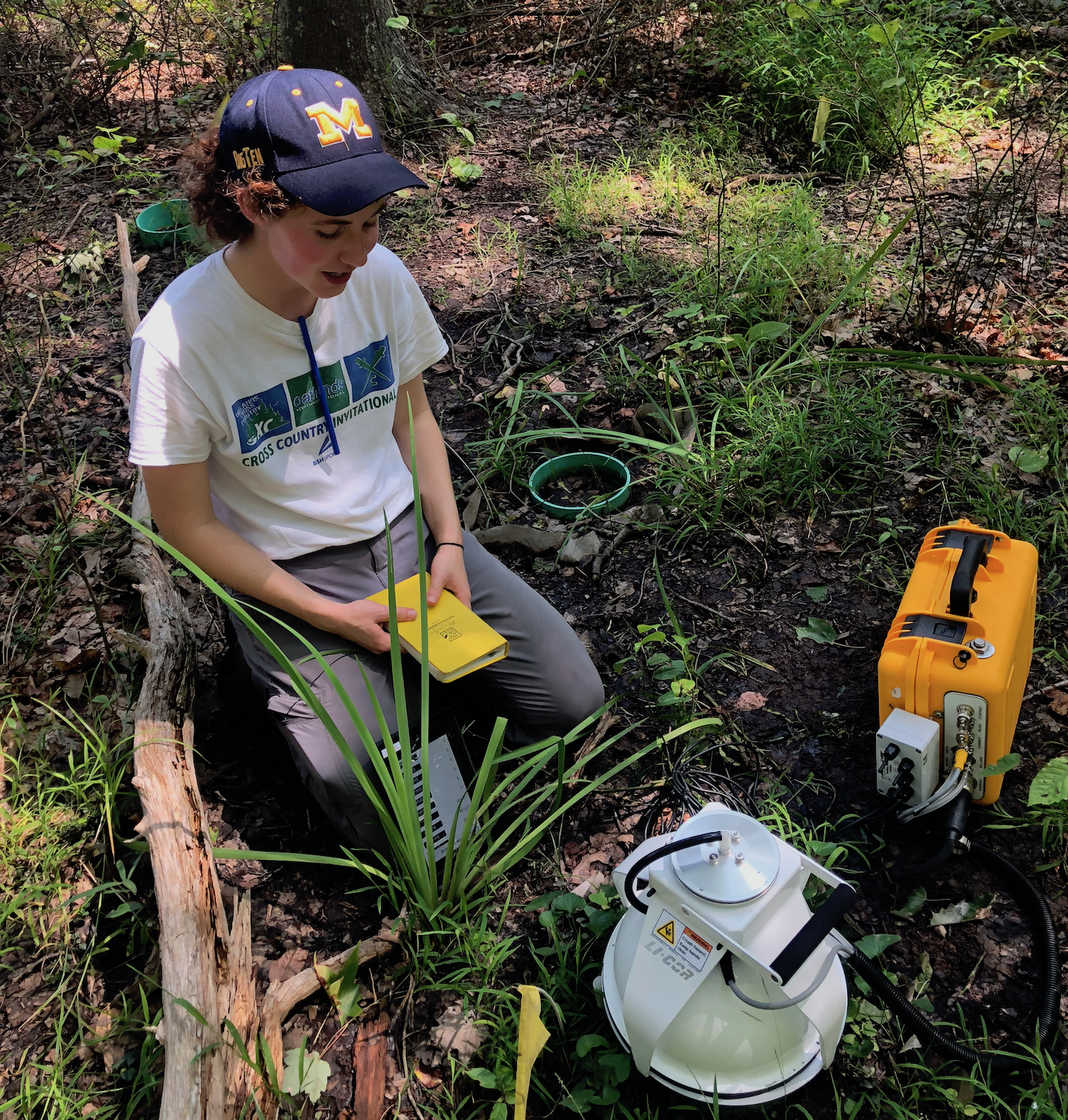The soil-to-atmosphere CO2 flux – or soil respiration – is one of the largest carbon fluxes in the earth system. An increasing number of continuous measurements have been made over the last 25 years; these data are an invaluable resource for probing the sensitivities of respiration and the carbon cycle more generally.
AmeriFlux is excited to be one of the community members working with Ben Bond-Lamberty (Pacific Northwest National Laboratory) on his ESS-DIVE-funded effort to develop a community standard for chamber flux data.

An automated soil respiration system at the Smithsonian Environmental Research Center in Edgewater, MD.
COSORE is a lightweight, open-source continuous soil respiration database. It is intended to serve as a community resource for synthesis and model benchmarking, and to be linked with complementary data products such as AmeriFlux flux-met data. COSORE’s design emphasizes reproducibility, transparency, and open data.
To learn more, keep reading.
Globally, there is no central database or repository for continuous soil respiration (RS) data, which are increasingly measured using automated chambers at locations around the world. In contrast, a central database exists for seasonal-to-annual RS flux values (Bond-Lamberty and Thomson, 2010) as well as for multiple eddy-covariance data products such as AmeriFllux and FLUXNET (Baldocchi et al., 2001).
Significant issues have impeded progress towards creating a central database for soil respiration. These include cultural and institutional issues surrounding data sharing; challenges associated with establishing adequate data storage; difficulty arriving at a robust and scalable computational architecture; and, critically, a lack of agreement on a standardized format for continuous RS data.
The prototype continuous RS database COSORE maps individual contributed datasets to standardized data and metadata formats, greatly reducing the burden of data preparation for synthesis and analysis. COSORE’s design emphasizes the importance of computational reproducibility, scientific transparency, and open data. The initial mapping has been carefully designed but remains tentative, as it has not been subjected to wider community engagement.
Next steps in the COSORE effort are to:
- Identify and develop a standard format for continuous RS data important to the earth science community,
- Define the cross-walk between COSORE’s standard and other RS standards in use in the community, and
- Test QA/QC and ingestion tools.
This will ensure that future versions of COSORE are well-grounded from a theoretical/ disciplinary sense, incorporate the ESS community’s experience, and that data ingestion tools are scalable and robust.

High school senior intern Mercedes H. measures soil respiration at the Smithsonian Environmental Research Center in Edgewater, MD.

No Comments
Be the first to start a conversation